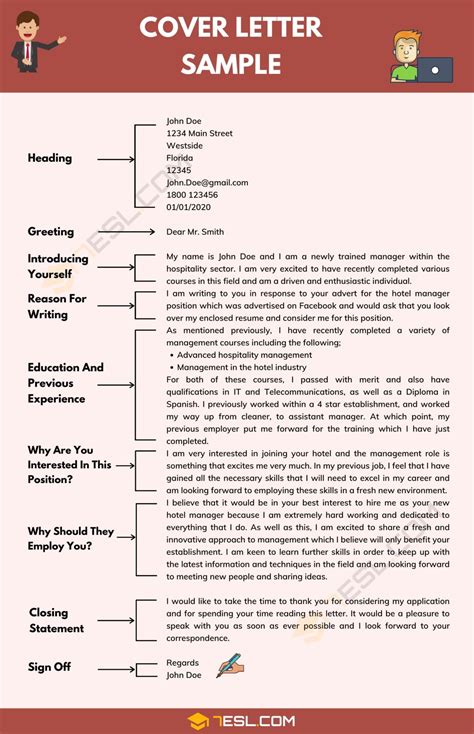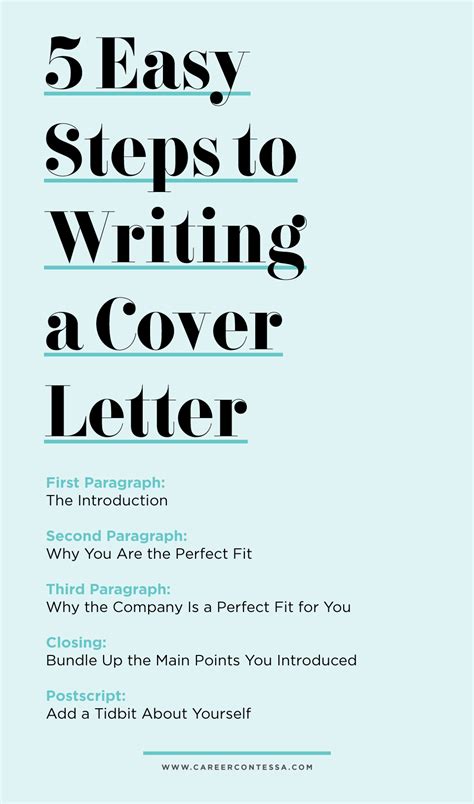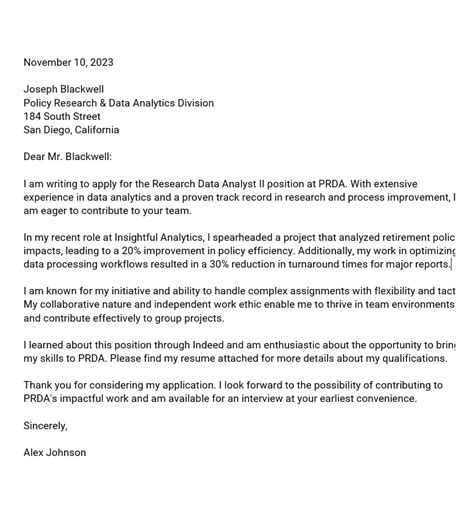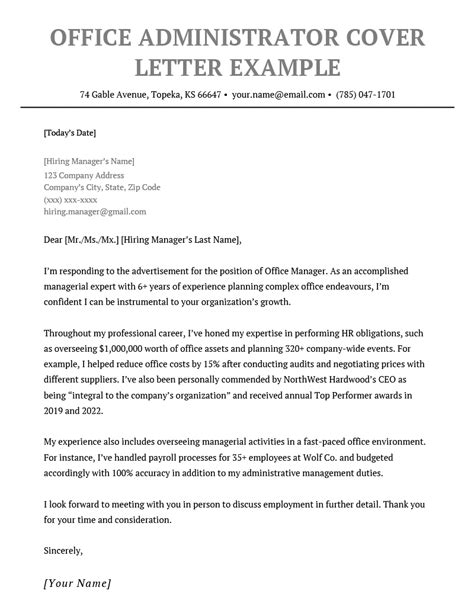How Can I Write A Good Cover Letter

The Art of Crafting an Impressive Cover Letter: A Comprehensive Guide

In today's competitive job market, a well-written cover letter can make a significant difference in catching the attention of hiring managers and increasing your chances of landing an interview. A cover letter is an opportunity to showcase your unique skills, experiences, and motivations, setting you apart from other candidates. It serves as a personalized introduction, allowing you to connect with the employer and demonstrate your suitability for the role. Here, we'll delve into the intricacies of creating a cover letter that leaves a lasting impression.
Understanding the Purpose of a Cover Letter

A cover letter is more than just a formality; it's a powerful tool to showcase your personality, passion, and fit for the role. It complements your resume by providing a narrative context to your professional journey. Here's how you can maximize its impact:
- Highlight Key Qualifications: Use the cover letter to emphasize the skills and experiences that make you an ideal candidate for the specific position. This is your chance to go beyond the bullet points on your resume and provide a more detailed explanation of your abilities.
- Demonstrate Enthusiasm: Show your genuine interest in the company and the role. Discuss why you're excited about the opportunity and how it aligns with your career goals. This enthusiasm can be a deciding factor for employers.
- Provide Context: Help the hiring manager understand your professional story. Explain any gaps or transitions in your career, providing context that might not be immediately clear from your resume.
- Personalize: Tailor your cover letter to each job you apply for. Avoid generic statements and instead, focus on the unique aspects of the position and the company. This demonstrates your research and interest.
Structuring Your Cover Letter for Success
A well-structured cover letter guides the reader through your professional narrative, ensuring they grasp your suitability for the role. Here's a suggested outline to follow:
- Introduction: Begin with a strong opening paragraph that grabs the reader's attention. Introduce yourself and provide a brief overview of your professional background and why you're interested in the role.
-
Body Paragraphs:
- Discuss your most relevant skills and experiences, linking them to the job requirements.
- Provide specific examples to illustrate your abilities and achievements.
- If applicable, mention any projects or initiatives you've led or been a part of that align with the company's goals.
- Conclusion: Wrap up your cover letter by reiterating your enthusiasm and expressing your eagerness to discuss how your skills can contribute to the company's success. Provide your contact details and invite the hiring manager to reach out.
Writing Techniques to Enhance Your Cover Letter
Writing an effective cover letter requires a blend of storytelling, professionalism, and attention to detail. Here are some tips to elevate your writing:
- Use Active Voice: Write in a direct and assertive tone. Active voice makes your writing more engaging and conveys confidence.
- Avoid Clichés: Stay away from overused phrases like "I'm a hard worker" or "I'm a team player." Instead, provide concrete examples that illustrate these qualities.
- Proofread and Edit: Grammar and spelling mistakes can detract from your message. Proofread your cover letter carefully and consider asking a friend or mentor to review it for a fresh perspective.
- Keep it Concise: Aim for a length of around one page. Hiring managers often receive numerous applications, so a concise cover letter is more likely to be read in full.
Research and Customization: Keys to a Successful Cover Letter

Researching the company and the role you're applying for is crucial. It demonstrates your genuine interest and allows you to tailor your cover letter effectively. Here's how you can leverage research:
- Understand the Company's Culture and Values: Visit the company's website, read their blog, and check their social media channels. This will give you insights into their mission, values, and recent achievements.
- Analyze the Job Description: Carefully read the job posting and identify the key requirements and responsibilities. Highlight these in your cover letter, showing how your skills and experiences match.
- Use Specific Examples: When discussing your skills and experiences, provide specific instances where you demonstrated those abilities. For example, instead of saying "I'm good at problem-solving," mention a challenging situation you faced and how you resolved it.
Overcoming Common Challenges in Cover Letter Writing
Writing a cover letter can sometimes be daunting, especially when you're not sure where to start. Here are some strategies to overcome common challenges:
- Writer's Block: If you're struggling to begin, start by jotting down your key achievements and experiences. Then, connect them to the job requirements. This can help you find the right words and structure.
- Lengthy Cover Letters: Aim for quality over quantity. Focus on the most relevant and impressive aspects of your background, rather than trying to include every detail.
- Personalization: If you're applying for multiple roles, it's tempting to use a generic cover letter. However, taking the time to personalize each cover letter can significantly improve your chances of being noticed.
The Impact of a Well-Crafted Cover Letter
A cover letter is more than just a formality; it's a powerful tool to make a lasting impression. When done well, it can:
- Increase Interview Opportunities: A well-written cover letter can set you apart from other candidates, making you a more memorable and appealing choice for hiring managers.
- Showcase Your Fit: It allows you to demonstrate how your skills, experiences, and personality align perfectly with the role and company culture.
- Create a Connection: By sharing your passion and enthusiasm, you can build a connection with the hiring team, making them more likely to remember and consider your application.
Conclusion: Mastering the Art of Cover Letter Writing
Writing an effective cover letter is a skill that can be honed and perfected. By understanding its purpose, structuring your letter thoughtfully, and leveraging research and personalization, you can create a cover letter that stands out. Remember, a cover letter is your opportunity to tell your professional story, showcase your unique value, and leave a lasting impression on hiring managers. With practice and a thoughtful approach, you can master the art of cover letter writing and increase your chances of landing the job you desire.
How long should a cover letter be?
+A cover letter should ideally be around one page in length. Keep it concise and focused, ensuring you cover the most relevant and impressive aspects of your background.
Should I use a creative format for my cover letter?
+While creativity can be an asset, it’s important to strike a balance. Ensure your cover letter is easy to read and navigate. A simple, professional format is often the best choice, allowing your content to shine.
How do I make my cover letter stand out?
+To make your cover letter stand out, focus on personalization. Research the company and role thoroughly, and showcase how your skills and experiences align perfectly with their needs. Use specific examples to illustrate your points.



